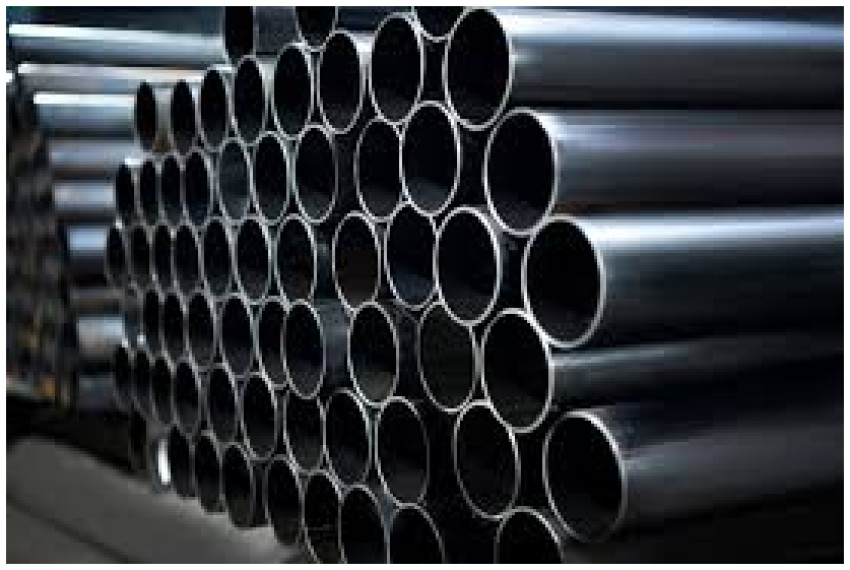
Straight seam welded steel pipes are divided into high frequency resistance welding and submerged arc welding according to the welding process. Straight seam submerged arc welding is referred to as UOE, and straight seam high frequency resistance welding is referred to as ERW.
Compared with submerged arc welding, the welding process of high-frequency resistance welded steel pipe (ERW steel pipe) is that the ERW process does not add any welding materials during the welding process and the welding shape does not go through thermal melting. Only the weld metal undergoes a recrystallization process, so it forms The chemical composition of the weld is exactly the same as that of the base material. The steel pipe is annealed after welding to create cold working internal stress and the welding internal stress is improved. Therefore, the comprehensive mechanical properties of ERW steel pipe are better.
Straight seam submerged arc welding (UOE steel pipe) uses a post-weld cold expansion process to expand the pipe, so the geometric dimensions of UOE steel pipes are relatively accurate. The quality of the joints when UOE steel pipes are butted is good, thus ensuring the welding quality. The pipe expansion process ensures certain Part of the internal stress is eliminated to a certain extent.
In addition, multi-wire welding (three-wire, four-wire) is used when welding UOE steel pipes. This welding process generates small linear energy and has a small impact on the heat-affected zone of the base metal. The rear welding wire of multi-wire welding can eliminate the stress generated during welding on the front welding wire, thereby improving the mechanical properties of the steel pipe. The base material can achieve 100% ultrasonic flaw detection on each steel plate to meet Gaodao's requirements for the base material. However, although the overall performance of UOE steel pipe is better than other steel pipes, its high price discourages users with tight funds.
1. Differences in raw materials and production capacity
The raw material of ERW steel pipe is hot rolled steel coil, and the raw material of UOE steel pipe is hot steel plate. Therefore, ERW steel pipes can achieve continuous assembly line operations, with high production efficiency and low production costs. However, UOE steel pipes are processed with steel plates, which cannot achieve continuous assembly line operations, resulting in low production efficiency and high production costs.
ERW steel pipes are limited by the thickness of the steel coil. Generally, the maximum thickness that can be produced is 25mm, and the maximum diameter that can be produced is 660mm; while the maximum thickness that UOE steel pipes can produce is 40mm, and the maximum diameter that can be produced is only limited by the width of the steel plate. Currently, it can The maximum diameter produced is 1422mm.
2. Differences in welding
ERW steel pipe welding does not require adding welding wire; UOE steel pipe requires adding welding wire.
3. Appearance difference
Both the inner and outer welds of ERW steel pipes need to be removed, so it is beneficial to anti-corrosion; the welds of the inner and outer walls of UOE steel pipes have excess height, which is detrimental to anti-corrosion.
4. Differences in procurement cost and difficulty
The procurement cost of ERW steel pipes is low, while the cost of UOE steel pipes is very high. The general price difference is 15%-25%. There are few UOE steel pipe manufacturers in China, and procurement is difficult. When the diameter is P406mm, the difference in procurement cost is even greater. There are many manufacturers of ERW steel pipes and the procurement difficulty is low. When the diameter is <D406mm, the procurement cost will be greatly reduced.
5. Application differences
ERW steel pipes are mainly used in land long-distance pipelines such as natural gas, refined oil, crude oil, ore slurry. UOE steel pipes are mainly used in high-pressure submarine long-distance pipelines.




